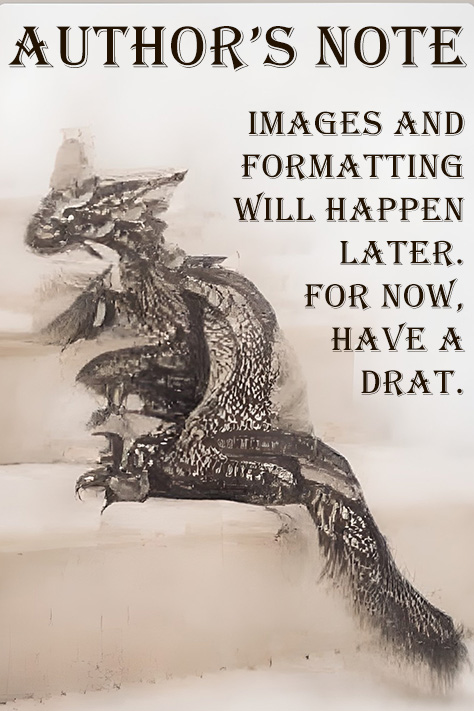Reaping Plague
The reaping plague was a highly-lethal, highly-mutagenic contagious disease that swept across central and southern Feraweth around 500 years ago. Its method of contagion was not strictly known, but was theorized to be transmissable by physical contact of bodily fluids, including sneezing (which the plague itself did not cause).
It affected intelligent humanoids only--beasts and birds, as well as creatures like dragons and sphinxes, were unharmed and did not seem to be passive carriers of the disease. Humans and elves were the most susceptible to the plague, quickly followed by dwarves, halflings, and gnomes; more bestial races like kobolds, lizardfolk, and centaurs only rarely caught it and almost always died when they did.
The effects of the reaping plague on a body were permanent and could not be halted by known medicine or even healing magic. The first sign of the plague was a swift blanching of the skin and hair, rendering a person bone-pale and seemingly bloodless, regardless of their original coloration. This was accompanied by persistent "brain fog" and dulled reflexes.
Within a week, thick deposits of cartilage (internal) and keratin (external) would begin growing throughout the body, often immobilizing the joints and providing natural armor plating along the jaw, head, shoulders, and back. This process could range from uncomfortable to intensely painful, depending on where the deposits were forming and how quickly they grew. The victim's brain fog persisted through this stage.
Two to three weeks after the initial blanching, victims would usually die of internal complications when these hardened deposits interfered with their organs. The less "standard humanoid" their anatomy, the more likely a victim would die more quickly and more suddenly. For those who lived past this stage, they could expect lessened brain fog, significant body dysmorphia, and social ostracism. It is uncertain when the reaping plague would cease being contagious in each victim, but once a person survived the growth of these new masses, they seemed unable to transmit the plague in any direction.
Humans proved the most likely to survive, horribly mutated and disabled by the physical changes and the emotional and mental scarring that accompanied the experience. Elves, despite the similarity in their physiology to humans, had a much higher mortality rate; dwarves were the next most common long-term survivors. It is theorized that the body's ability to bear extra internal and external mass was related to survival rates.
Unfortunately for the survivors, growths were not the final stage of the plague. Over the coming months, their bodies would continue to mutate in inconsistent and inhuman ways: they would cease growing any body hair, surface-level keratinous deposits would continue to form sections of chitinous armor, and their arms would weaken and wither. Most survivors kept some use of their arms, despite the drastic weakness and muscle loss, and many could still manage fairly dextrous work with their hands.
The final stage of the reaping plague was the addition of half-formed limbs, branching from the victim's shoulderblades and angling up and over their original arms. These limbs were almost entirely chitinous, rarely symmetrical, and often completely nonfunctional. The amount of physical energy required to grow these limbs proved a secondary cause of death, even a year after presumed stabilization of the victim. Those survivors who were provided with excessive amounts of nutrient-dense sustenance were most likely to survive and be left with moderately-useful secondary limbs.



